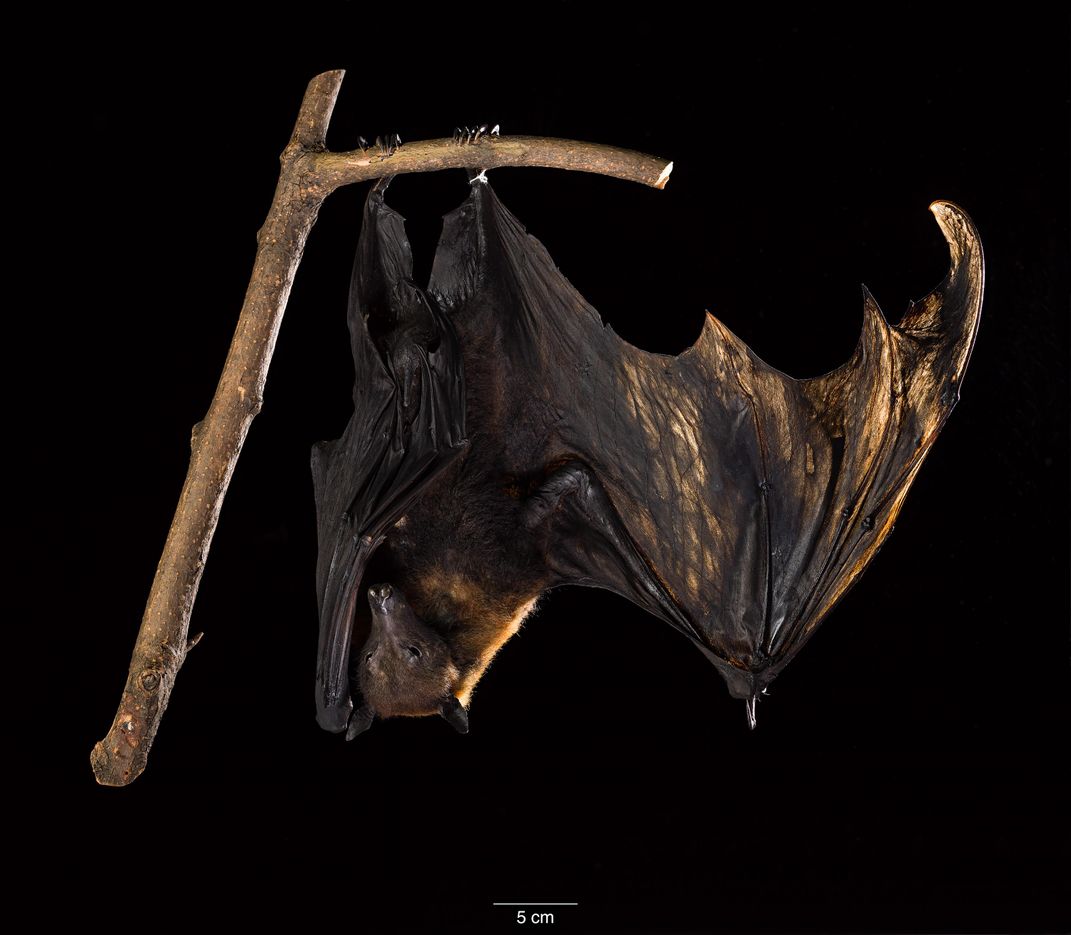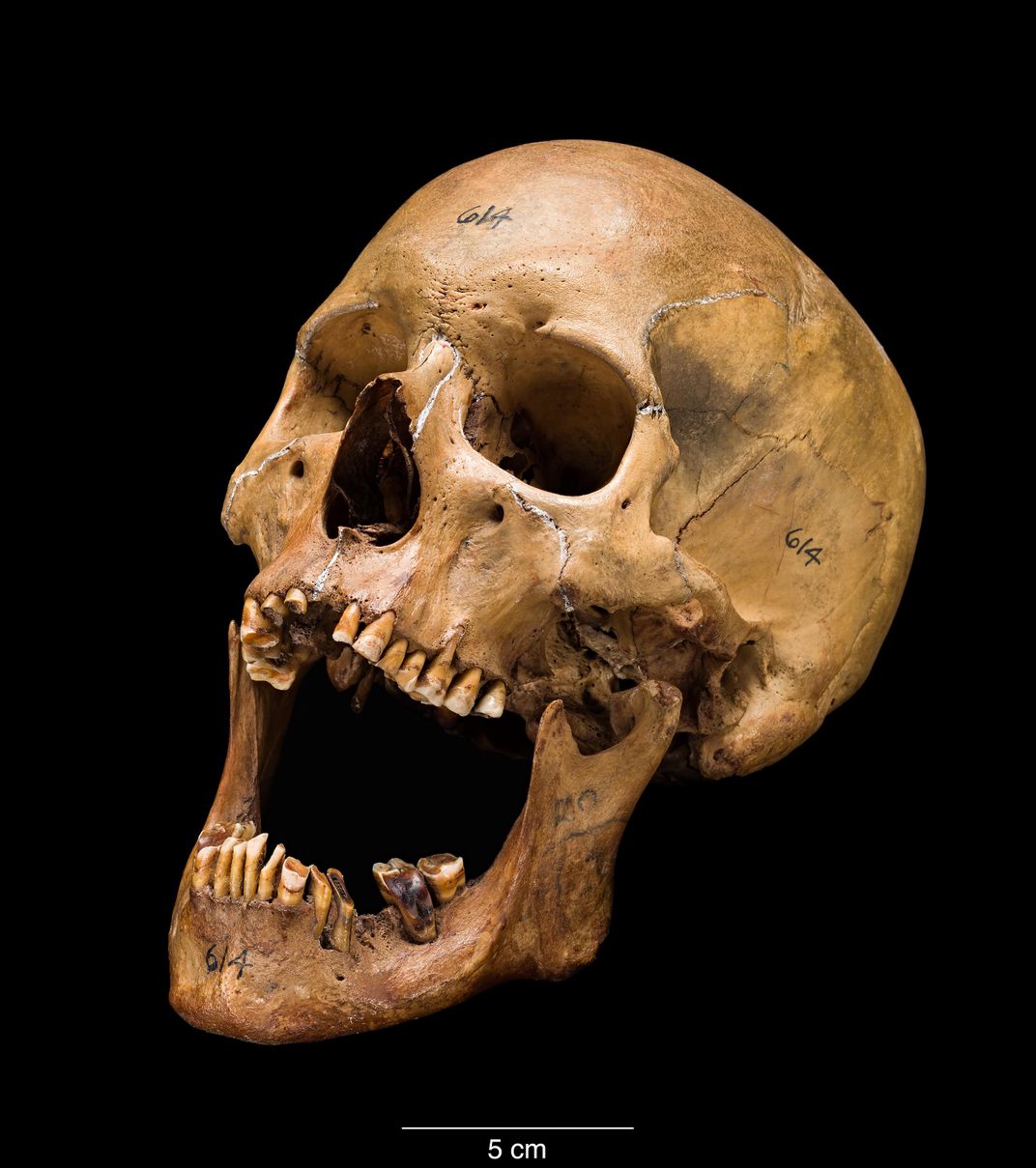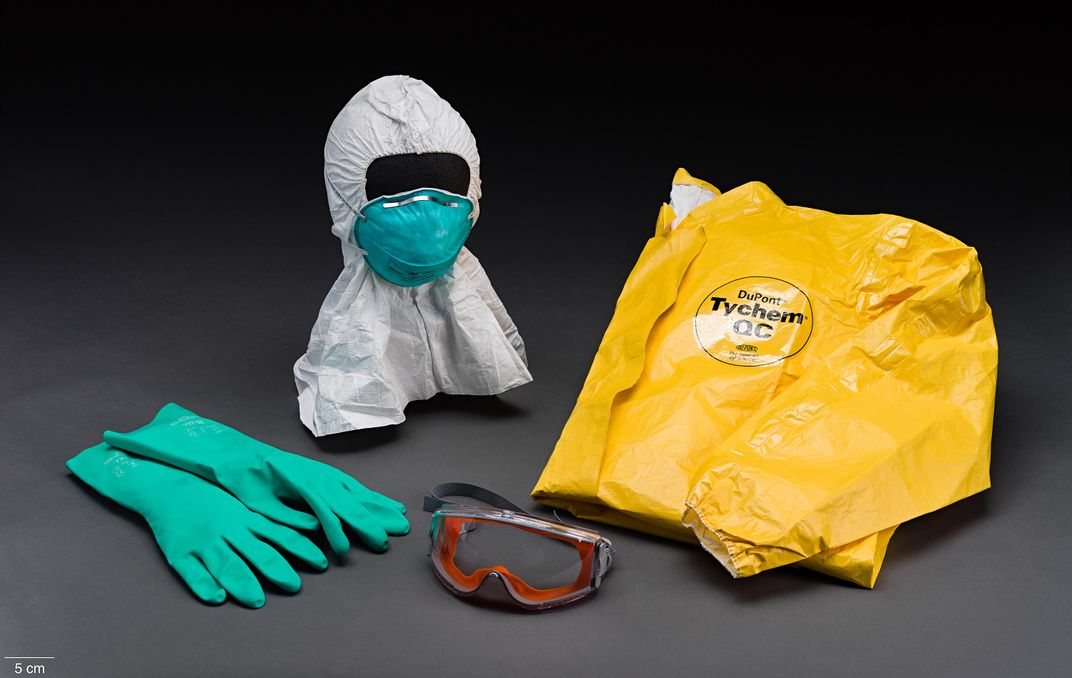How Globalization Changed the Way We Fight Disease
A new exhibition at the National Museum of Natural History explores the deadly past of global epidemics
/https://tf-cmsv2-smithsonianmag-media.s3.amazonaws.com/filer/0a/c1/0ac183f8-14e4-475f-8e11-5b62524f5c9f/nmnhcomms_2018-1.jpg)
In the Greek poet Hesiod’s Works and Days, the first humans “lived remote and free from ills, hard toil and heavy sickness.” There were neither maladies, nor misery, nor mayhem. But when Prometheus brought fire to man, he angered Zeus, and as punishment, the king of the gods sent Pandora down to Earth.
When she opened that fateful jar from Olympus every imaginable woe poured out—and from that moment onward, “Diseases came upon men continually by day and by night, bringing mischief to mortals silently.”
There’s more than a grain of truth in the ancient fable. As modern anthropologists note, the rise of civilization—namely, the development of agriculture, animal husbandry and domesticated life—led to the growth of catastrophic illnesses such as smallpox, tuberculosis and polio.
In the last 10,000 years, the human relationship to disease has changed in dramatic ways. Modern technology allows people to move around the globe further and faster than our ancestors could imagine.

More than half the world’s populace now lives in urban areas, which present no shortage of new ills stemming from environmental pollution, squalid housing and inadequate sanitation. Changes in agriculture and new infrastructure projects continue to open new pathways for disease, and global processes such as climate change affect the geography and ecology of our planet in dramatic ways.
These connections among humans, animals and their environment are the focus of a new exhibition at the National Museum of Natural History. “Outbreak: Epidemics in a Connected World,” explores the influence of zoonotic viruses, some 800 diseases that spread from animals to humans and vice versa. These include well-known ailments such as HIV, influenza and Ebola, along with lesser-known contagions such as chikungunya. The show runs through May 2021, and falls during the hundredth anniversary of the Spanish flu pandemic, an influenza outbreak that affected about one-third of the world’s population, killed at least 50 million people, and demonstrated the remarkable threat of disease in a world moving towards globalization.
Curator Sabrina Sholts spent three years developing “Outbreak” along with a team of experts from hospitals, nonprofits, government agencies and pharmaceutical companies. As a physical anthropologist, she says the work was an eye-opening experience, particularly because of the broad range of backgrounds the exhibition needed to capture.
“For my work, I have always thought about diseases in terms of humans,” Sholts says. “But, I now realize it’s so contextual. . . We can’t separate human health from the health of the natural world.”

To better acknowledge these connections, the show embraces the theme of “One World, One Health.” Sholts attributes the phrase to William Karesh, a scientist who worked on campaigns against Ebola for the Wildlife Conservation Society in the early 2000s (it’s also been embraced by organizations such as the World Health Organization, USDA and the International Society for Infectious Diseases). The goal of One Health is to develop policies and interventions that account for social, political and economic realities, not just disease etiology.
Sholts points to Nipah virus, which affects communities across Southeast Asia, as an example. When the disease first emerged some 30 years ago, epidemiologists struggled to determine its source. But during an outbreak in Bangladesh a few years back, researchers discovered that exposure occurred in just two ways: When a host cared for an infected person, or when they consumed raw date palm sap.
Harvesters collected this sap during the winter months by shaving off bark from date trees and allowing the sap to collect into pots overnight. Through investigation, researchers found that these pots were contaminated by fruit bats, who spread the virus through saliva and other bodily fluids. Instead of exterminating the bats, as might have been the case during the early 20th century when yellow fever, hookworm and malaria prompted elaborate eradication campaigns, they proposed a simpler intervention: Encouraging locals to use an inexpensive bamboo cover to reduce the likelihood of bats polluting the sap.
The importance of these grassroots solutions is one of the themes of the exhibition. “We didn’t want to feel like it’s just the United States playing a major role,” says Jonathan Epstein, the vice president for science and outreach at EcoHealth Alliance and a contributing expert to Outbreak.

When it comes to addressing more endemic ailments or developing biomedical solutions, though, experts often turn to other groups for help, including museums like the Natural History Museum. “The collections help us to understand the magnitude and rapidity of change,” Sholts explains back in her office, which is populated with boxes of bones and upright skeletons.
Sholts jokes that her one scientific contribution to the exhibition is a human skull collected from a man diagnosed with influenza and tuberculosis. While he died almost a century ago, Sholts and other scientists can study the plaque on his teeth, which still contain the DNA of pathogens and microbes that were present in his mouth. Using advanced technologies, they can then characterize these viruses and see how they’ve changed over time.
That scholarship not only helps to better prepare for future outbreaks but can explain the cause of present-day epidemics. When hantavirus emerged in the Southwestern United States in 1993, for example, research using the museum’s collections showed that the disease was present in deer mice as far back as 1979.
Through testing, scientists found that the spread of the disease was not a result of recent evolution, but changes in demography. More people were living in the region than before, and with increasing urbanization, it was more likely for people to come into contact with rodents carrying the disease. That year, the rodent population was also larger than average because of an El Niño season: Increasing precipitation had led to increased plant productivity and a larger available food supply. Putting these factors together shed light on why and how the seemingly mysterious virus had emerged.
For Sholts, these stories are examples of how individuals working together can make a difference even in the face of frightening and difficult challenges. She says that amid the despair that diseases so often inflict, it's important to highlight narratives of hope and examples where individual ingenuity and perseverance made a difference. With more than 10 million people expected to attend the exhibition in the next three years, she hopes these personal narratives will excite visitors and encourage them to consider a path in public health, too.
But if you can’t make it to Washington D.C., don’t despair. A “DIY” version of the show is available online with materials translated into six different languages. It’s a new venture for the museum, born out of the fact that Sholts and fellow curators knew there was no way to capture every potential pandemic–even in the 4,000 square-foot exhibition space. Beyond the show’s materials, the team also included layout examples and created engagement guides to help local communities design exhibits tailored to their unique location and history. Sholts points to a newly-created simulation about Ebola from the Museum of Science in Boston as an example of how people are already getting involved.
“Today, an outbreak anywhere is a threat everywhere,” she says. “The cultural context of the exhibit demands more from us because we’re all connected.”
“Outbreak: Epidemics in a Connected World,” is on view at the National Museum of Natural History through May 2021.